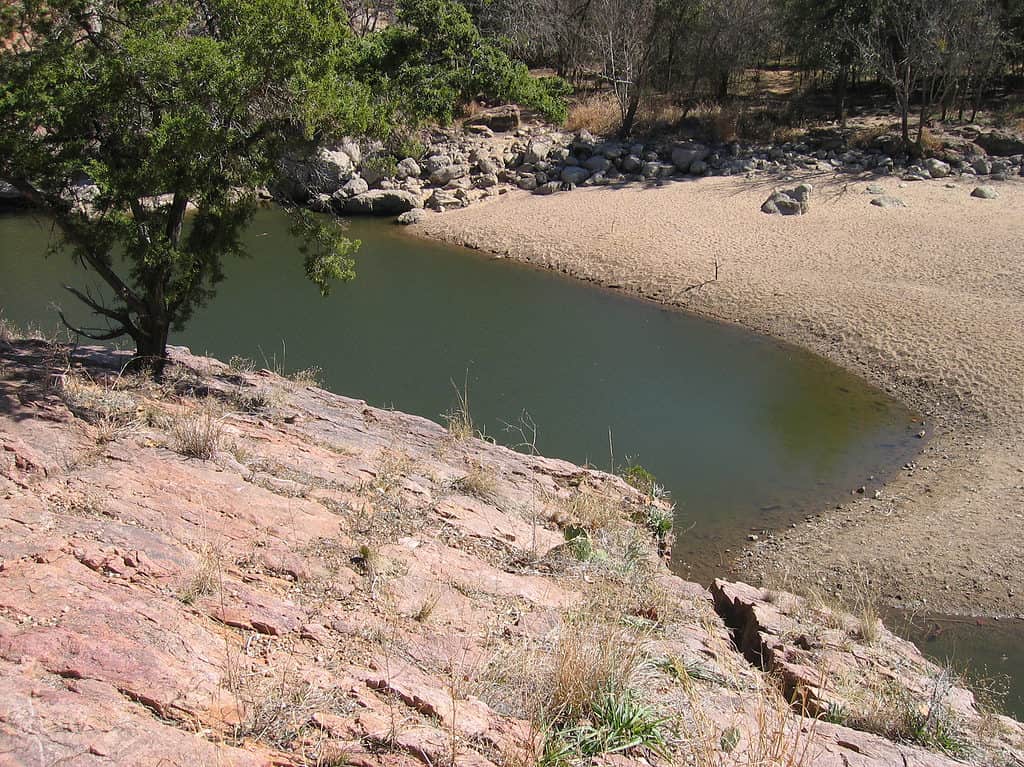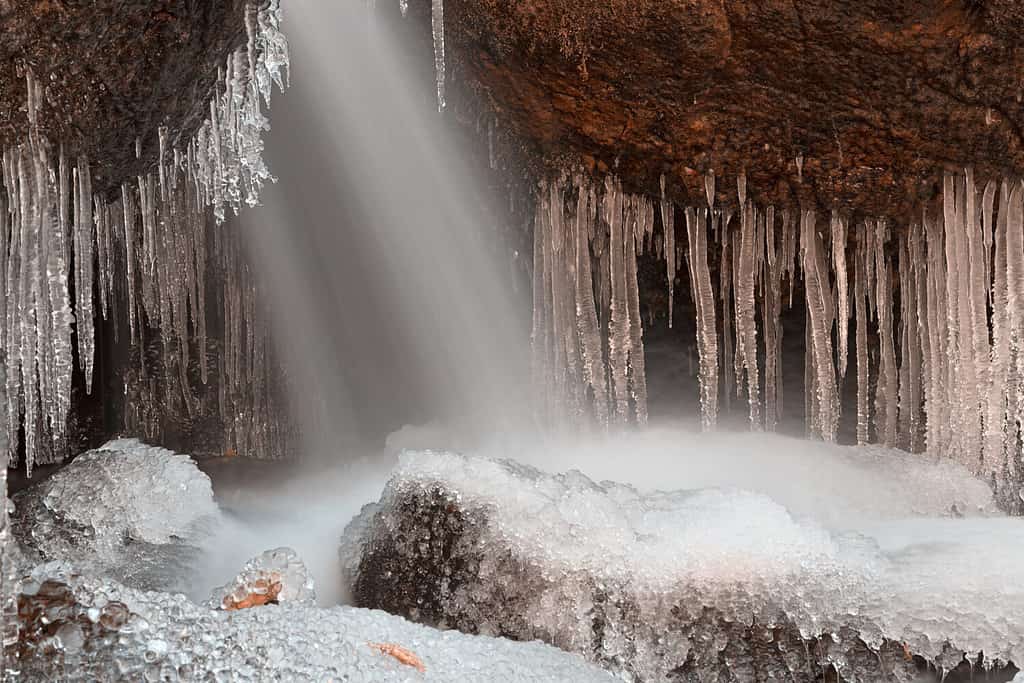The state of Virginia is well-known for some of the most beautiful weather on the east coast of the United States. Of course, this generally depends on the time of year, with the most comfortable temps typically in spring and autumn. However, like anything else, some variances tug away from the norms, and every fall in Virginia is not the same.
The hottest temperature ever recorded in Virginia came in on July 15, 1952, when the town of Balcony Falls posted a temperature of 110 degrees Fahrenheit. This was peak summer, though, and summer is expected to bring the heat. What is not expected is a heatwave in the fall or winter. During the month of November, temperatures are supposed to be dropping as we get ready for winter. Sometimes, however, Mother Nature has different plans. For instance, the most sizzling heatwave to ever sweep through Virginia in November may surprise you.
Hottest November in Virginia History

Outside, a woman struggles to handle higher-than-usual temperatures.
©EugeneEdge/Shutterstock.com
According to Climate Spy, the state reaches an average high temperature of 78 °F in November. However, the hottest November in Virginia history was recorded on three separate dates — all with a high temperature of 86 °F. Two of these dates were reported on November 1, first in 1950 and again in 1974. Virginia saw this record November temperature again in 1982 when it kicked off a five-day heatwave across much of the eastern United States.
What Is the Hottest Virginia Has Ever Been?
While looking at the hottest November in Virginia, we are forced to ponder the highest-ever recorded temperature in the state. Of course, this record does not belong to the month of November but to the month you would expect: July. Twice, on July 5 and again on July 7, 1900, the temperature in Columbia, VA, reached a whopping 110 °F. However, this is only the first time in Virginia history that temps soared so high.
As mentioned earlier, the mercury in Virginia struck 110 °F again on July 15, 1952. The ensuing heatwave persisted for several days, drying up crops and exhausting people across the state. Interestingly, this record high temperature for Virginians comes in only 24 degrees lower than the highest ever temp reported in the United States. The highest nationwide temperature in U.S. history occurred when Furnace Creek in Death Valley, California, hit 134 °F on July 10, 1913.
What Was the Worst Heat Wave in U.S. History?

Water levels drop, and vegetation dries up during a drought.
©iStock.com/borsheim
According to the National Weather Service, the country’s hottest heat wave occurred in July 1936. During what became known as the “Dust Bowl,” some of the hottest days on record occurred, with a total of 29 days seeing temps of at least 100 °F. This included a record of 12 straight days of plus 100 °F highs from July 4-15. The astonishing heat wave produced one of the most sweltering summers on record, particularly throughout the Upper Midwest, Plains, and Great Lakes regions.
Contributing to the incredible heat wave was a long-standing drought. The dry climate accentuated the heat, and poor farming methods left very little vegetation to assist with mitigating the high temperatures. By the end of the heat wave, a total of approximately 5,000 people tragically lost their lives.
What’s the Coldest it Has Ever Been in Virginia?

Frozen landscapes are often bitter but beautiful.
©Nicolas Raymond/Shutterstock.com
Naturally, conversation on the hottest day in Virginia leads to the coldest day. The chilliest-ever temperatures in Virginia will leave you shocked, wondering how any human can tolerate such frigidity. Nearly 39 years ago, on January 21, 1985, the temperature in Virginia plummeted to an unimaginable -30 °F in Mountain Lake. Reports show this temperature resulted from a mass of arctic air that swept through the region.
Is Virginia Getting Hotter?
According to the National Oceanic and Atmospheric Administration (NOAA) Climate Atlas of the United States, average temperatures since 1885 indicate that not only is Virginia getting hotter, but it’s also getting wetter. Virginia’s climate, which is typically considered “temperate,” has been shifting. Data shows a precipitation increase of at least 2 inches per century has accelerated.
Besides global weather patterns and latitude, critical factors shaping Virginia’s climate include:
- The Atlantic Ocean/Gulf Stream.
- The Appalachian and Blue Ridge mountains.
- Virginia’s multifaceted configuration of streams and rivers.
While temperatures continue to rise due to dynamics like climate change, Virginians can expect more heat and humidity across the state.
The photo featured at the top of this post is © Guenter Albers/Shutterstock.com
Thank you for reading! Have some feedback for us? Contact the AZ Animals editorial team.







